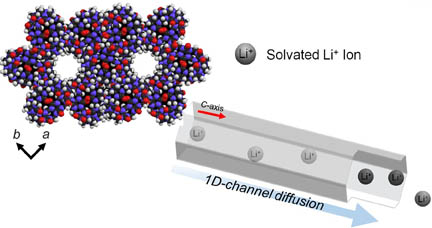Chemical batteries store a lot of energy but require a long charge and discharge time. Capacitors charge quickly but cannot store enough charge for many applications. Researchers have attempted to create a solid-state micro-supercapacitor (MSC) using various hybrids of metals and polymers, but none were suitable for practical use. In more recent trials using graphene and carbon nanotubes to make MSCs, the results were similarly lackluster.
Now a team of researchers led by Young Hee Lee, including scientists from the Center for Integrated Nanostructure Physics at the Institute for Basic Science (IBS) and Department of Energy Science at Sungkyunkwan University, both in South Korea, has devised a new technique for creating an MSC. The team modeled their film structure on natural vein-textured leaves to take advantage of the natural transport pathways which enable efficient ion diffusion parallel to the graphene planes found within them.

The team layered a graphene-hybrid film with copper hydroxide nanowires. Many alternating layers achieved the desired thickness. Then an acid solution dissolved the nanowires so that a thin film with nano-impressions was all that remained. This film was applied to a plastic layer with thin ~5 μm long parallel gold strips placed on top. Everything not covered by the gold strips was chemically etched away on top and gold contact pads added. A conductive gel filled in the remaining spaces and was allowed to solidify. Once peeled from the plastic layer, the finished MSCs resemble clear tape with gold electrical leads on opposite sides.
The team is said to have produced stunning test results, including volumetric energy density ten times higher than currently available commercial supercapacitors. The MSCs display electrical properties about five orders of magnitude higher than similar lithium batteries and are comparable to existing, larger supercapacitors. See the IBS web site at http://goo.gl/HfvMOe for more information.
Advertisement
Learn more about Electronic Products Magazine





